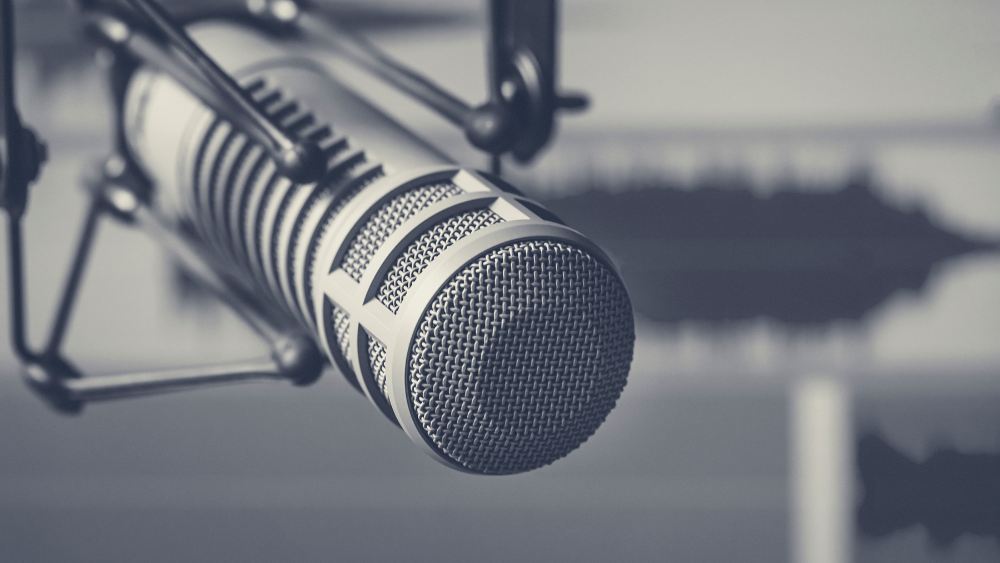Insights
INSIGHTS
All Topics
My Account
How to make your podcast accessible
18 Oct 2021by kirsty marrins
We look at five steps every charity can take to improve the accessibility of their podcast
While podcasts have been around since the 1980s, they’ve become hugely popular in the last few years. According to Ofcom, one in eight people in the UK listen to a podcast each week and regular listeners consume an average of seven podcasts weekly.
As their popularity increased, charities have invested in podcasts as a way to make long-form content more digestible and share real-life stories and experiences in a format that’s authentic and engaging.
Pause and Listen by Pause.org, for example, “aims to amplify the voices and experiences of women who no longer have children in their care”. Each episode delves into an issue that affects their lives and offers the chance to pause and reflect, and discuss how different stakeholders can work together to make things better.
Not only do podcasts provide us with insight into particular experiences, they also allow for discussion and debate. They have the power to make us think more deeply and consider different viewpoints. They can also help inspire people to support a cause, campaign for change, volunteer or fundraise.
How to make your podcast accessible
As with all forms of communication, it’s important that podcasts are accessible to as many people as possible, including people with auditory, visual, or cognitive disabilities.
Here’s five ways to help make your podcast as accessible as possible so that everyone can benefit – from the podcast itself to how you promote it to potential listeners.
Include a transcript
One of the easiest ways to make your podcast more accessible is to include a transcript of the episode. Note that this is different to show notes, which usually includes a short description of the episode, any guests, episode highlights, links to websites mentioned etc. A transcription should be a complete text-based version of the episode – word for word.
The transcript can either be featured in the show notes, on your website or can be made available as a download. Create your transcript using free software such as Otter.ai, Descript, or simply type it up yourself.
Not only are transcripts important for accessibility, they’re also great for search engine optimisation (SEO) – helping people discover your content online.
Choose media player wisely
If you’re starting out, make sure you choose an accessible media player from the get-go as you won’t be able to swap over to a different podcasting platform if they’re not accessible.
Look for accessibility features such as ensuring that all controls can be either reached or activated via the keyboard, that media does not autoplay, and that there are labels for each control.
Take a look at AblePlayer, which is the media player used on the Web Accessibility Initiative’s own website.
Make your artwork accessible
As podcasts have artwork, it’s important that this is accessible too. Using certain colours, fonts, and text sizes can make your artwork inaccessible so be sure to check that it meets accessibility standards.
Web Content Accessibility Guidelines have certain criteria for colour contrast of images and text. One criteria to adhere to is that your text should have a minimum contrast ratio of 3:1.
Use free tools to check your contrast ratio, such as OSS image colour checker. Note though that if your artwork is simply a logo, you aren’t required to meet the contrast ratio.
Ensure your website is accessible
Your website is probably your most valuable communications channel, especially if you have good SEO and keywords that will help drive traffic. It’s vital that your website is as accessible as possible and there are a number of ways to ensure this, such as using alt text, having appropriate page titles, headings, sub-headings, meta descriptions, and making sure your contrast ratio meets accessibility standards.
If you have a dedicated webpage for your podcast, include the transcript on the page.
Share on social media
One of the best ways to promote your podcast is to share it across your social media channels. As with all other communication channels, it’s important to make your social media posts accessible.
Platforms such as Twitter, Instagram, and LinkedIn allow you to add alt text to your images, meaning that those with visual impairments can understand what your image is about. Facebook offers automatic alt text, however you can edit it if you want to.
If you’re using hashtags to promote your podcast, ensure they are in CamelCase. This is when you capitalise the first letter of each word so that screen readers can read them out.
Podcasts are a brilliant way to reach more people and engage them in your work. They’re inexpensive to produce, however they do require time and energy and some skills. If you’re thinking of starting a podcast, here’s some top tips to get you started.
If you already have a podcast and are looking to grow your listeners, here’s how you can make your charity podcast successful.
More on this topic
Recommended Products
07 Mar 2025by Laura Stanley
Marketing trends for charities in 2025
17 Feb 2025by Laura Stanley
Charity Digital Exchange: Grow your charity with AWS
Our Events
Charity Digital Academy
Our courses aim, in just three hours, to enhance soft skills and hard skills, boost your knowledge of finance and artificial intelligence, and supercharge your digital capabilities. Check out some of the incredible options by clicking here.















